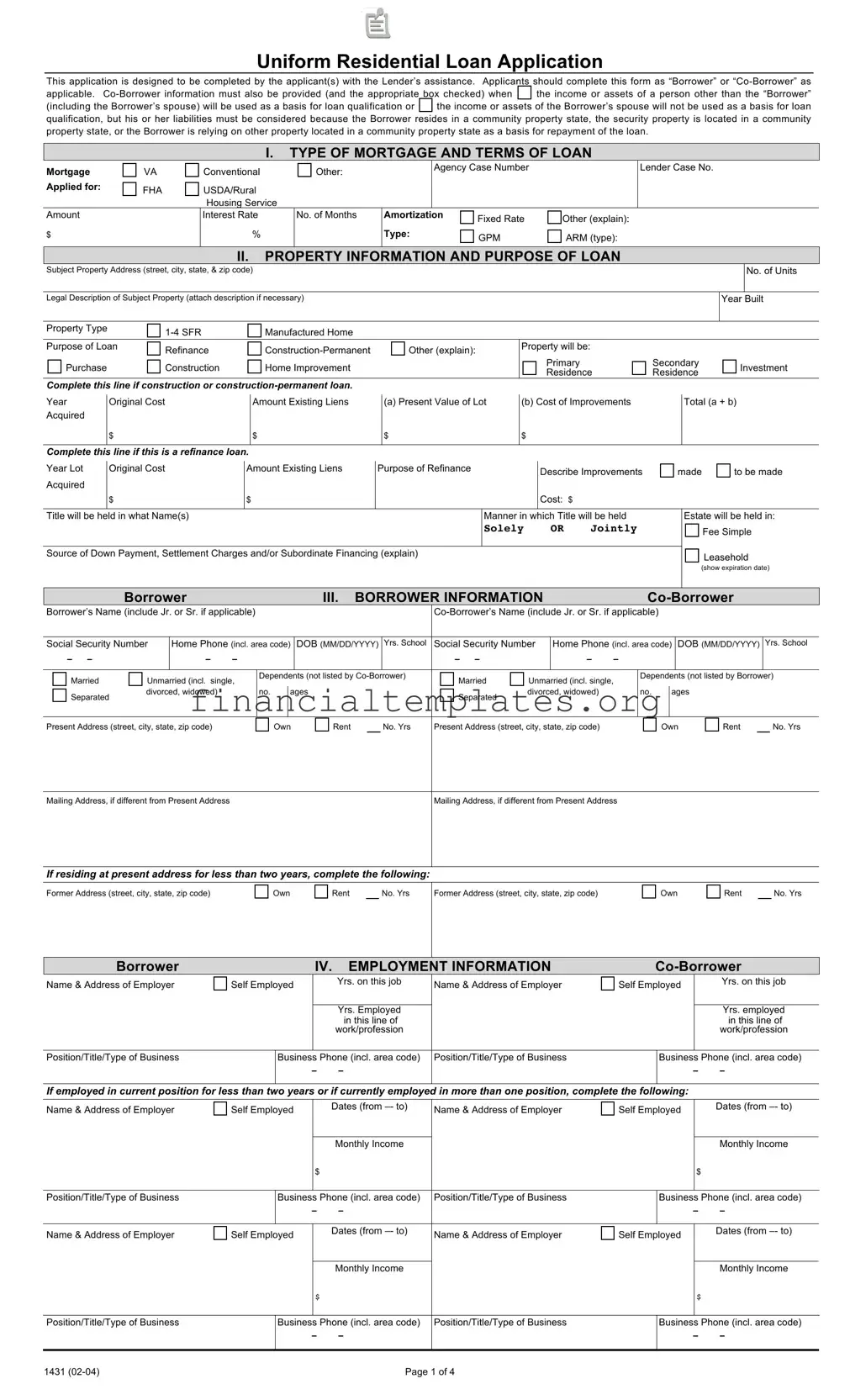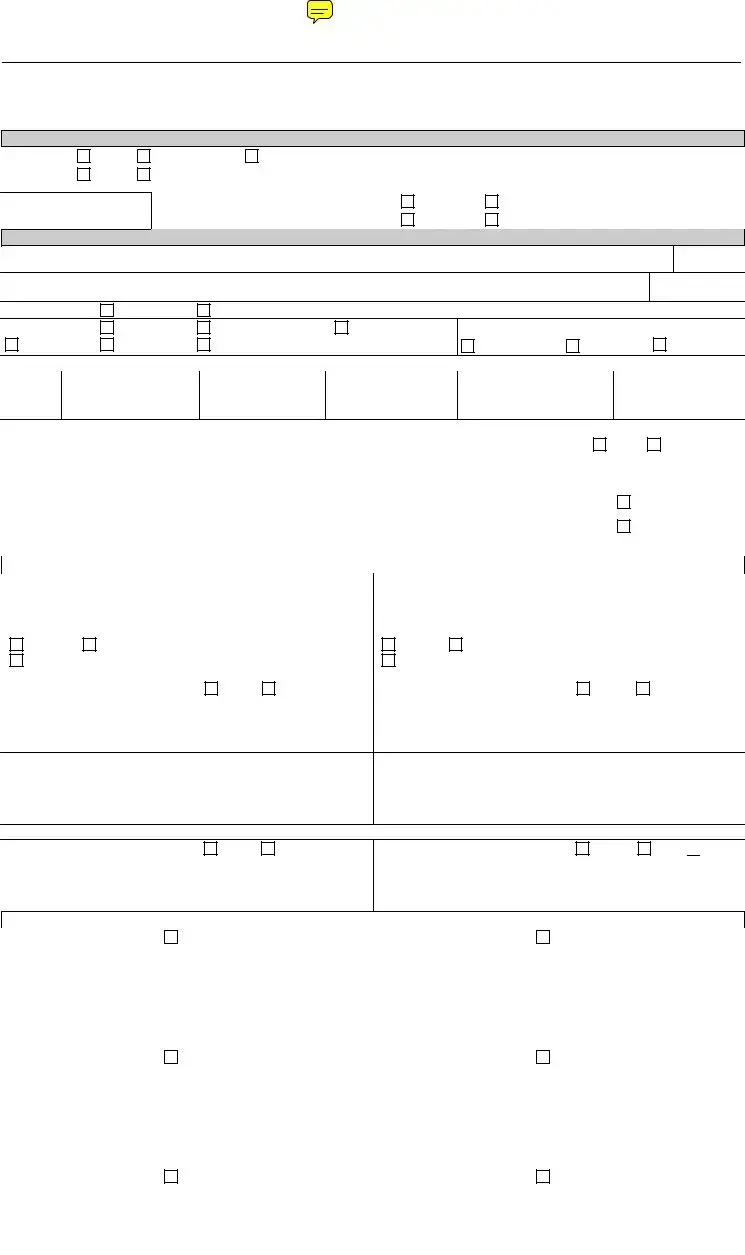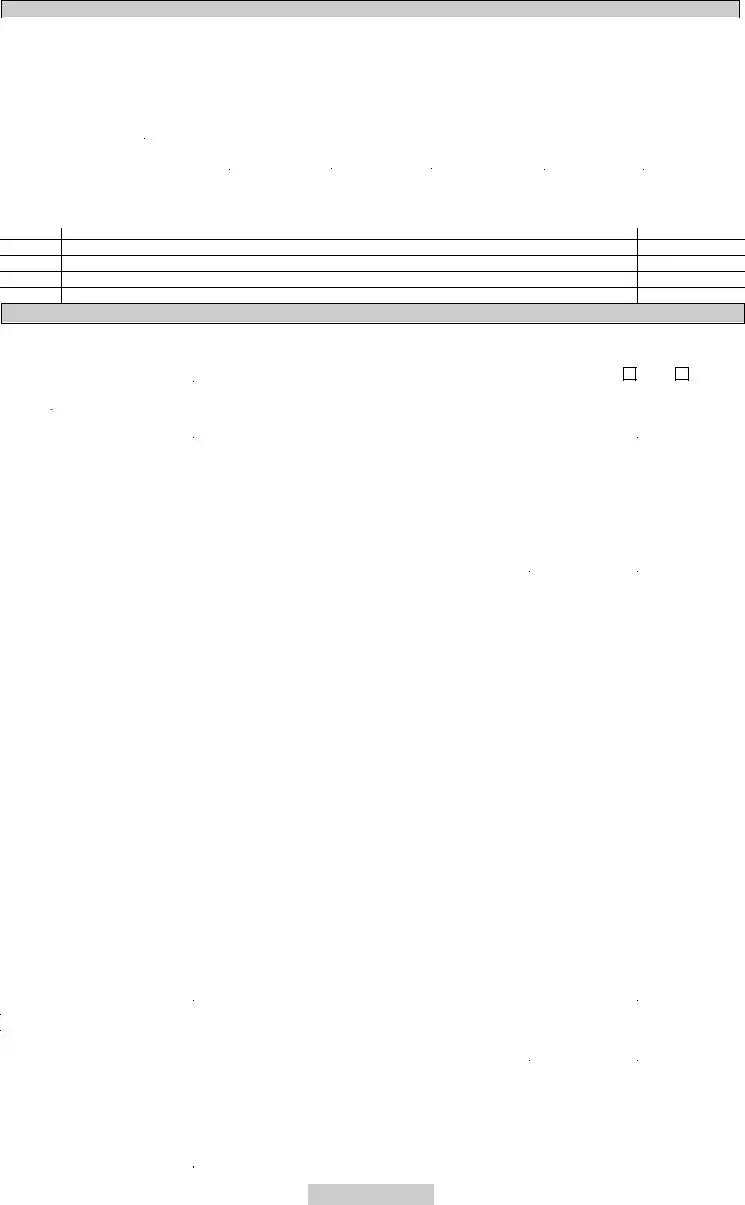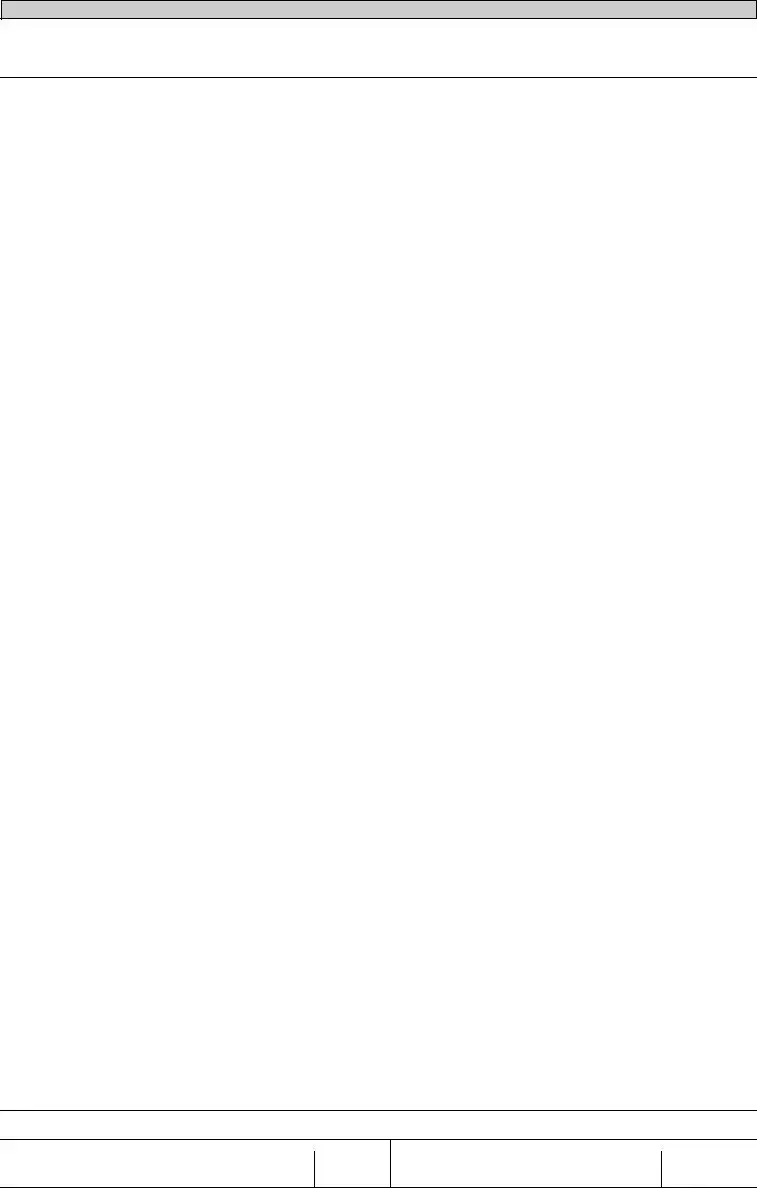The Mortgage Application, officially known as the Uniform Residential Loan Application, shares similarities with the Personal Financial Statement form. Both documents require detailed information about the applicant's financial situation, including income, debts, and assets. The main difference lies in their purposes: while the Mortgage Application is used specifically for securing a home loan, the Personal Financial Statement is a more general document that can be used for various financial needs, including loan applications and financial planning.
Similar to the Rental Application form, the Mortgage Application also gathers applicant information to assess eligibility. However, while the Rental Application focuses on a person's rental history and current employment to ensure they can pay rent, the Mortgage Application dives deeper into financial details, including credit history, to approve a loan for buying a property.
Just like the Credit Application form, the Mortgage Application assesses an individual's creditworthiness. Both forms collect information on financial status, employment, income, and existing debts. The difference lies in their end goal: the Credit Application is broader, for various types of credit requests, whereas the Mortgage Application is specifically for home loan approvals.
Employment Verification forms and the Mortgage Application both require confirmation of an applicant's employment status and income. The key difference is that the Employment Verification form is usually a separate document requested by the lender to verify the employment details provided in the Mortgage Application, emphasizing the critical nature of employment status in loan qualifications.
The Loan Agreement shares similarities with the Mortgage Application by outlining terms and conditions under which the loan is provided. However, the Mortgage Application is the initial step to apply for the loan, focusing on applicant eligibility, while the Loan Agreement is a binding document that is signed after loan approval, detailing the loan’s terms, repayment schedule, and interest rates.
Debt-to-Income (DTI) Ratio forms, often used in credit counseling or financial assessments, and the Mortgage Application both evaluate financial health by examining income in relation to debts. The Mortgage Application uses this comparison as part of its process to determine borrowing eligibility, similar to how a DTI form assesses an individual’s financial stability.
Income Verification forms, like the Mortgage Application, require proof of income to establish financial reliability. While the Income Verification form may be used for various purposes, such as renting an apartment, the income details in a Mortgage Application specifically help lenders evaluate a borrower's ability to afford a mortgage.
The Asset and Liability Statement, not unlike the Mortgage Application, lists an individual’s assets and liabilities. This comprehensive financial snapshot aids in assessing net worth for various purposes, including loan approvals. In the context of the Mortgage Application, detailing assets and liabilities helps lenders understand the applicant’s financial foundation for mortgage affordability.
Lastly, the Home Equity Line of Credit (HELOC) Application, while designed for a specific type of loan against the equity in a home, requires similar financial details from the applicant as does the Mortgage Application. Both identify the borrower’s financial situation, property details, and intended use of funds to determine loan eligibility, although for distinctly different types of loans.




